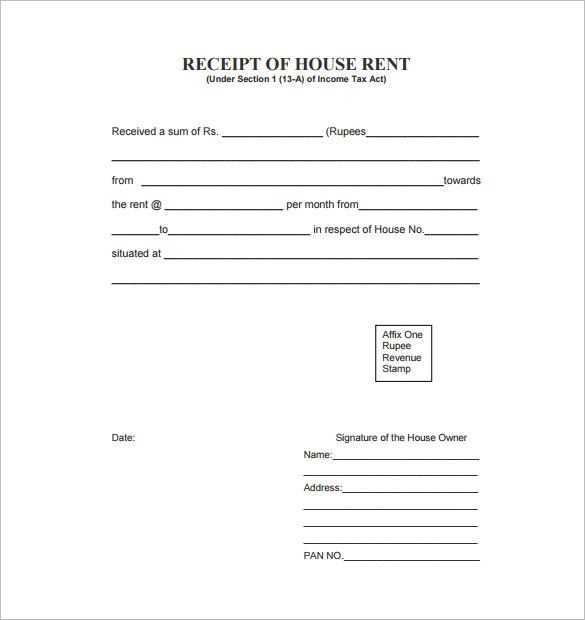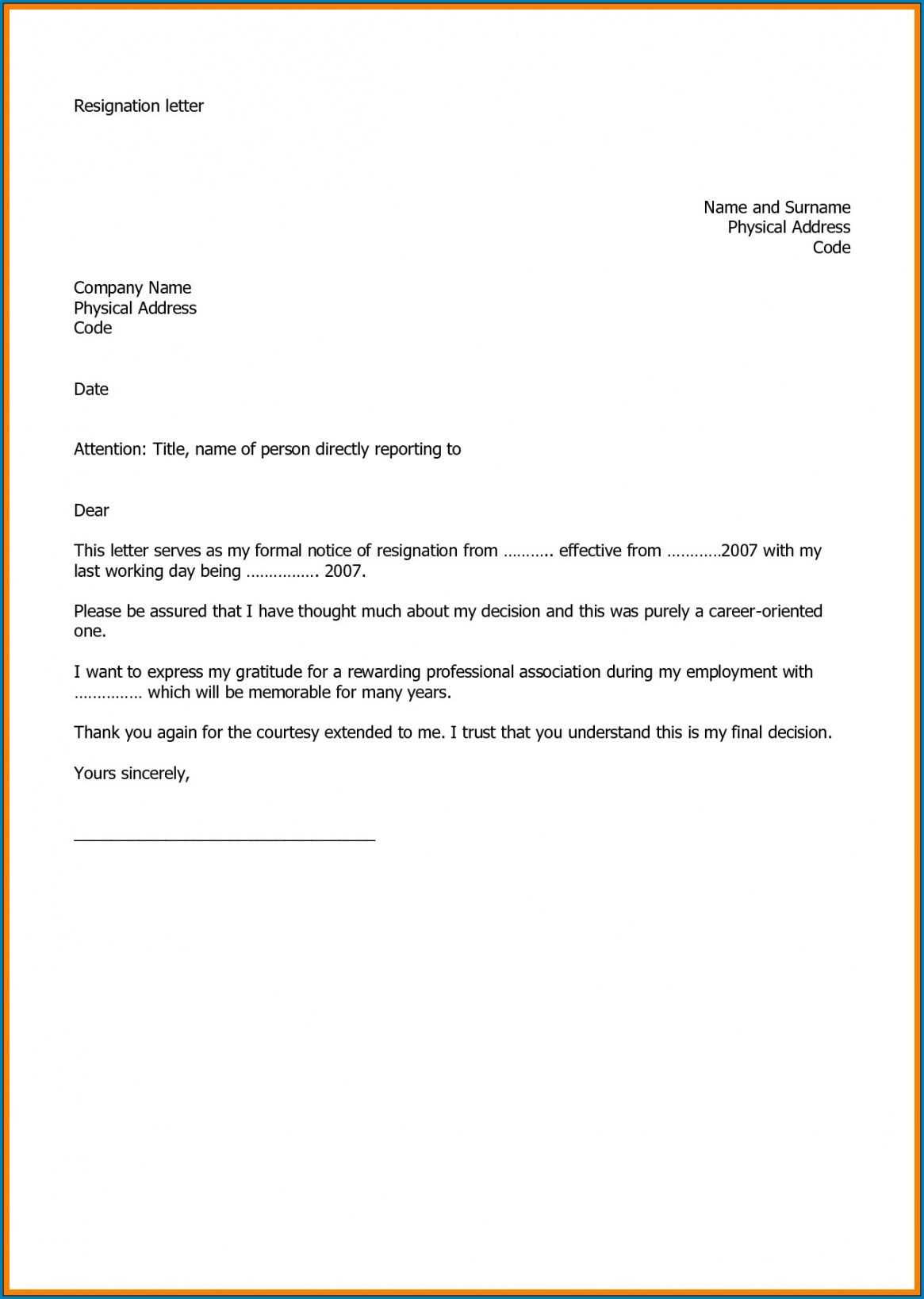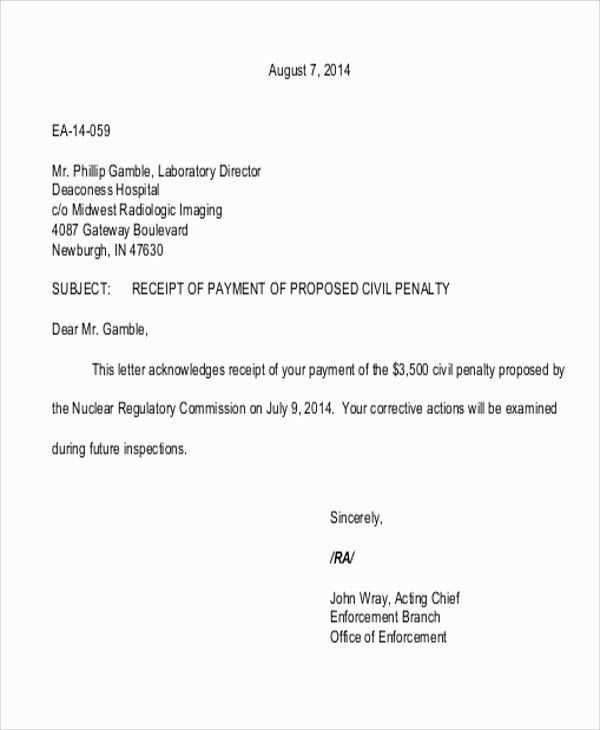
Use a receipt confirmation letter to acknowledge receipt of goods or services and confirm the details of the transaction. Make sure the letter is clear, concise, and provides all necessary information. Start by stating the purpose of the letter, mentioning the date and the specific items or services received.
Include all key transaction details, such as the quantity, price, and any relevant reference numbers. It’s helpful to briefly mention any conditions of the transaction that might apply, such as payment terms or delivery specifics. This ensures both parties are aligned on the expectations and terms.
Close the letter with an invitation for any further questions or clarifications, offering to assist with any issues. Reaffirm your commitment to the transaction by expressing gratitude and confirming the ongoing relationship.
Here is the corrected text with your suggestions in mind:
Ensure your letter opens with a clear and direct acknowledgment of the receipt. This lets the recipient know that their document or payment has been received. For example, you can start with: “We confirm the receipt of your payment/application/letter dated [insert date].”
Follow this with the necessary details. Include specifics like the amount received, the items, or any reference number to help the recipient track the transaction. For example, “The payment of $500 for invoice #12345 has been successfully received.”
In the next section, it’s helpful to reiterate any next steps or actions required, ensuring the recipient is informed about what comes next. You might say, “We will process your order and notify you once it ships.”
Finally, end the letter with a polite close, offering to assist further if necessary. You can conclude with, “Should you have any questions, feel free to contact us at [insert contact information].”
- Receipt Confirmation Letter Template
Ensure clarity and professionalism when confirming receipt with a straightforward template. Below is a sample structure for a receipt confirmation letter:
Receipt Confirmation Letter Structure
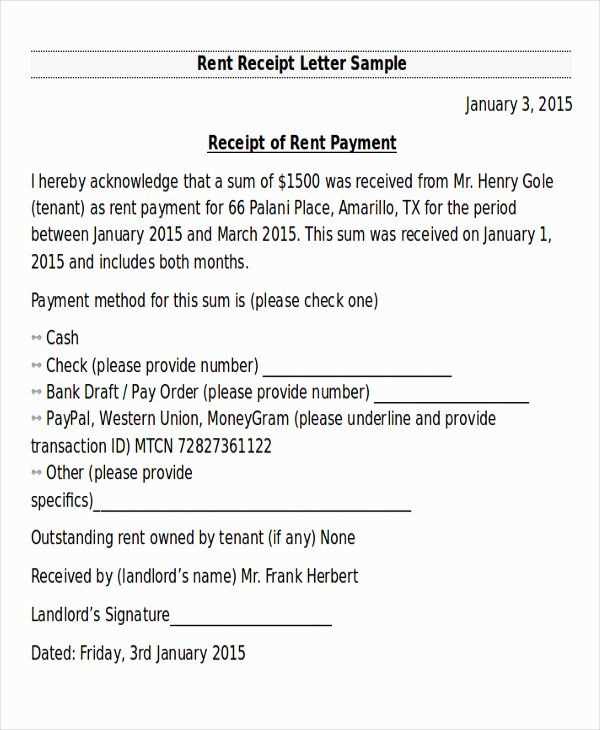
- Header: Include your name, address, and contact details at the top.
- Recipient Information: Mention the recipient’s name, position, company, and address.
- Subject Line: Use a clear subject like “Receipt Confirmation – [Document/Payment Name].”
- Confirmation Message: Start by acknowledging receipt of the document or item, specifying the date received.
- Additional Details: Provide any other relevant information, like document numbers or amounts, if applicable.
- Closing: End with a polite closing, such as “Sincerely” or “Best regards,” followed by your signature.
Example Template
Here’s an example of a receipt confirmation letter template you can adapt:
- [Your Name]
[Your Address]
[City, Zip Code]
[Email Address] | [Phone Number]
- [Date]
- [Recipient’s Name]
[Recipient’s Position]
[Company Name]
[Company Address]
- Subject: Receipt Confirmation – [Document/Payment Name]
-
Dear [Recipient’s Name],
I confirm receipt of the [document/payment/item] you sent on [Date Received]. Please find the details below:
- Item: [Description]
- Document Number: [Number]
- Amount (if applicable): [Amount]
If you need further clarification, feel free to contact me.
Sincerely,
[Your Name]
Adjust the template to match the specifics of your situation. Keep it brief and to the point for the best results.
Begin with a clear and direct acknowledgment of the receipt. State the exact date or time the item, payment, or document was received. This sets a solid foundation for the rest of the letter, ensuring the recipient knows you are confirming the specific transaction. For example, “I confirm receipt of your payment on [date].” If applicable, include any reference numbers or details to identify the transaction clearly.
Be Direct and Specific
Be concise and to the point. Mention the purpose of the letter–whether it’s acknowledging a product, payment, or document–and avoid unnecessary background details. Keep the tone professional but approachable. This ensures the recipient knows exactly what you are confirming.
Provide Supporting Information
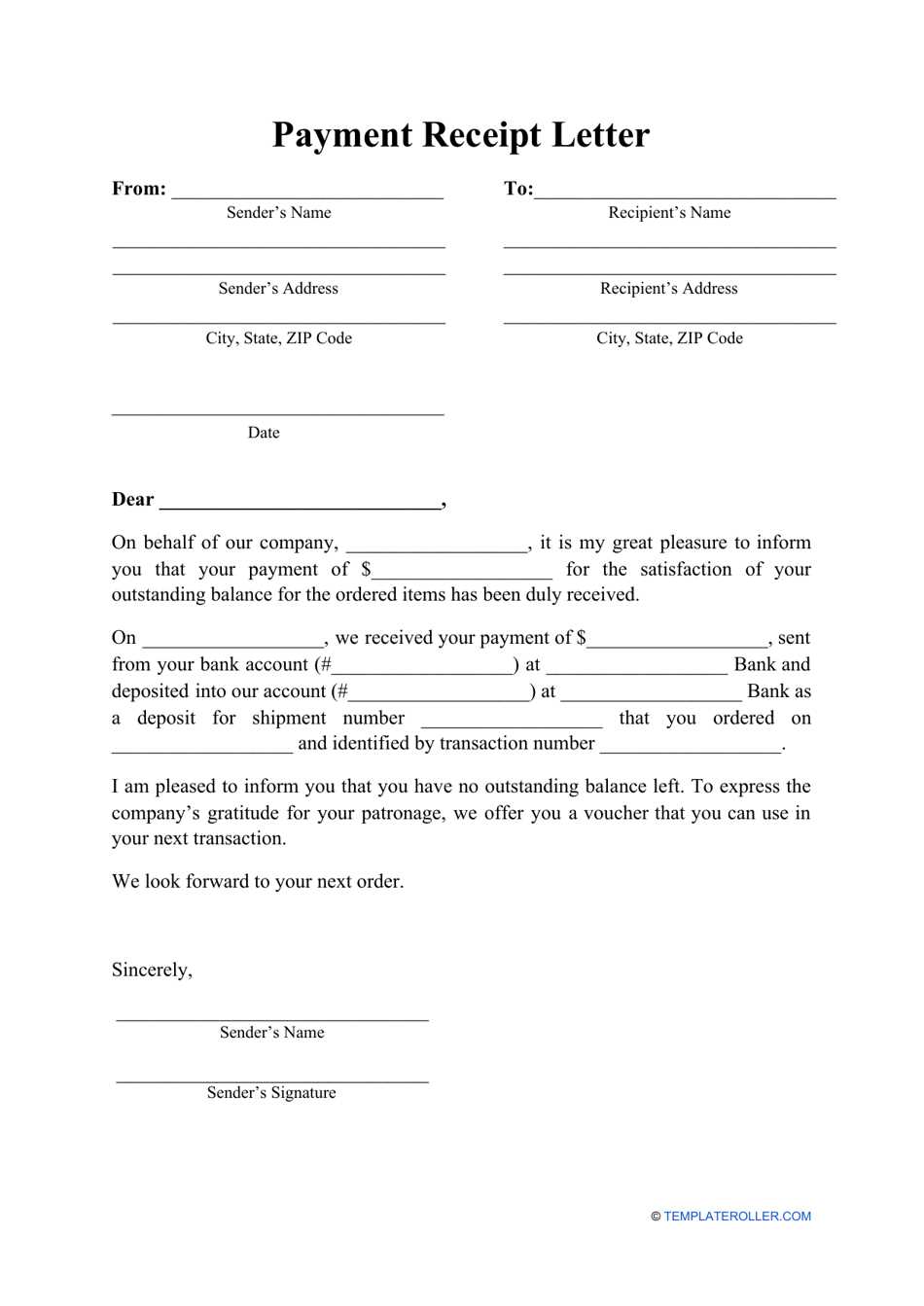
If needed, add any additional details that can help clarify the confirmation. This might include item descriptions, amounts, or any further steps the recipient should expect. Make sure your information is accurate and easy to verify.
A receipt confirmation letter should be clear and concise, covering key details that ensure both parties understand the transaction. Begin with the confirmation statement–acknowledge the receipt of the item, service, or payment. This lets the recipient know that the letter serves as a formal acknowledgment.
Transaction Details
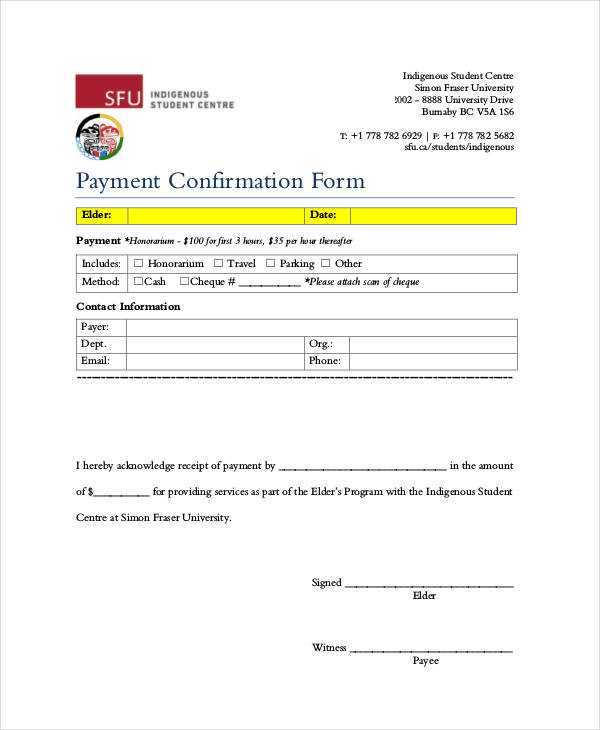
Provide specific details about the transaction. Include the date of the transaction, any relevant reference numbers, and a brief description of the item or service involved. This information helps identify the context of the receipt and avoids confusion later.
Recipient Information
Make sure the letter includes the recipient’s full name and contact details. This ensures that the confirmation is properly attributed and can be easily traced if any issues arise.
Finally, include a polite closing line confirming that any follow-up or inquiries are welcome, and provide a contact method for any further communication.
Always address the recipient properly and use their correct title. Mistakes in names or titles can lead to confusion and unprofessionalism. Double-check the spelling before sending the letter.
Avoid vague language. Be specific about the action being confirmed and the details surrounding it. Ambiguity can leave room for misunderstanding.
Don’t forget to include important dates and reference numbers. These details ensure the recipient knows exactly which transaction or agreement the confirmation pertains to.
Keep the tone respectful and formal. Overly casual language can make the letter seem less serious and may not convey the intended professionalism.
Do not use overly complex language or unnecessary jargon. Keep the wording clear and concise to make the letter easy to understand.
Neglecting to proofread can lead to small but significant errors. Always check for grammar or punctuation mistakes to avoid sending out an imperfect document.
Keep your language simple and direct. Avoid jargon or overly complicated sentences that may confuse the reader. Aim for clarity and precision to ensure the recipient easily understands the purpose of the letter.
Use Active Voice
Write in an active voice to make your message more engaging and straightforward. This ensures that the letter feels personal and proactive, which creates a sense of responsibility and promptness in communication.
Stay Concise
Focus on delivering the core message without unnecessary elaboration. Stick to the key points and remove any filler words. This helps the recipient focus on what matters most, improving the clarity of your communication.
Keep your tone polite but not overly formal. Striking the right balance shows respect while maintaining a professional yet approachable attitude.
Receipt confirmation letters play a significant role in legal matters by providing evidence of transactions or agreements. These letters ensure both parties have a clear understanding of the terms and the completion of the transaction. To avoid any confusion or dispute, it’s important to ensure the receipt confirmation letter is accurate, signed, and properly dated.
First, it is crucial to include the specific details of the transaction, such as the items or services received, the date of receipt, and any terms of agreement. This helps to protect both parties in case of future claims. In legal disputes, this document can serve as proof that the receiving party has acknowledged the receipt of goods or services, making it a valuable tool in court cases.
Furthermore, the confirmation letter should be signed by an authorized person from the receiving party. A signature validates the letter’s authenticity and adds credibility to the document in legal proceedings. The absence of a signature could lead to challenges regarding the document’s validity.
The inclusion of the sender’s contact information also helps clarify the origin of the receipt, allowing for easy reference if there is any need to revisit the matter later. Legal professionals may rely on such documentation to ensure that both parties are aware of the terms of receipt.
| Key Elements of a Receipt Confirmation Letter | Legal Importance |
|---|---|
| Specific transaction details | Protects both parties in case of future disputes |
| Signature of receiving party | Validates authenticity in legal contexts |
| Sender’s contact information | Ensures easy reference for future communication |
For parties involved in business transactions, understanding the legal aspects of receipt confirmation letters is key to maintaining transparency and safeguarding interests. Always ensure the document is clear, signed, and includes all necessary details.
Tailor the letter’s tone and content based on the recipient’s role and the purpose of the receipt. For formal contexts, like business transactions or legal confirmations, maintain a professional and concise tone. Use clear language and avoid any unnecessary embellishments. For personal or informal exchanges, a warmer, more conversational tone can help build rapport.
Consider adding specifics like reference numbers or dates to make the letter more relevant and organized. If the letter is for a customer, express appreciation for their transaction or timely payment. For internal uses, emphasize the confirmation aspect with precise details of the receipt or agreement.
Lastly, adjust the level of detail according to the context. A receipt confirmation letter for a simple purchase may require fewer details, whereas one for a large contract might need additional clauses or information about terms.
Start by structuring your receipt confirmation letter with a clear subject line. Include details such as the transaction date, the amount, and the goods or services received. This ensures the recipient knows the purpose of the letter immediately.
- Subject: Confirmation of Receipt of [Item/Service] – [Transaction Date]
- Introduction: State clearly that the receipt has been acknowledged. For example, “We confirm receipt of your payment for [service/product].”
- Details: Provide specific information about what was received. Include dates, amounts, or items to ensure clarity.
- Closing: Offer further assistance or a point of contact for any questions. For example, “Feel free to reach out for any further inquiries.”
Keep the tone polite and professional while focusing on accuracy. Avoid unnecessary statements that could make the letter too long or difficult to read.
